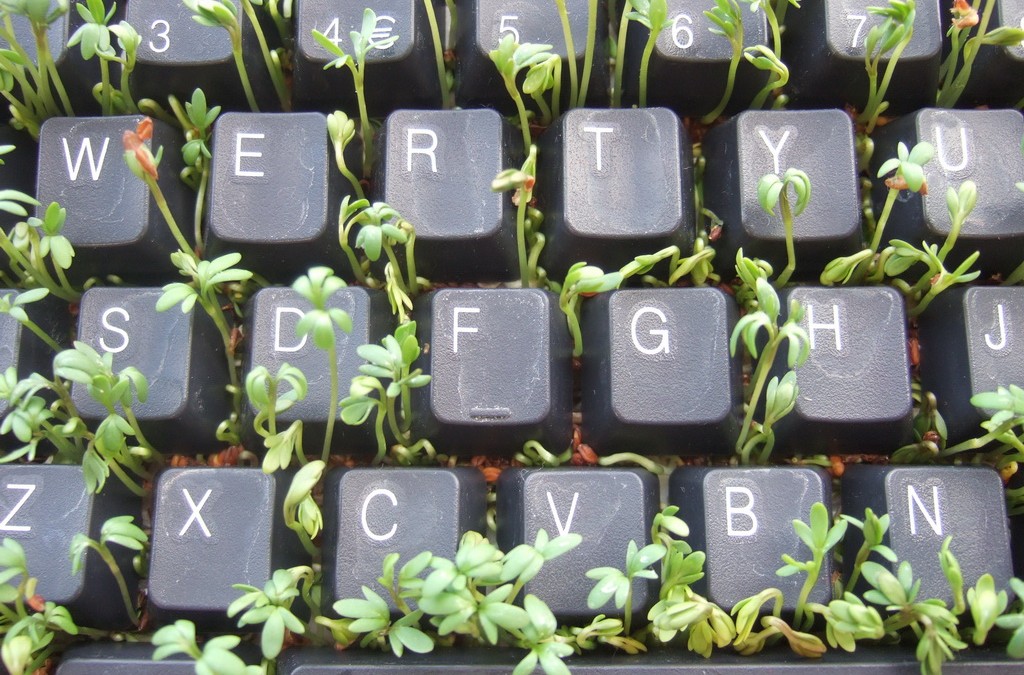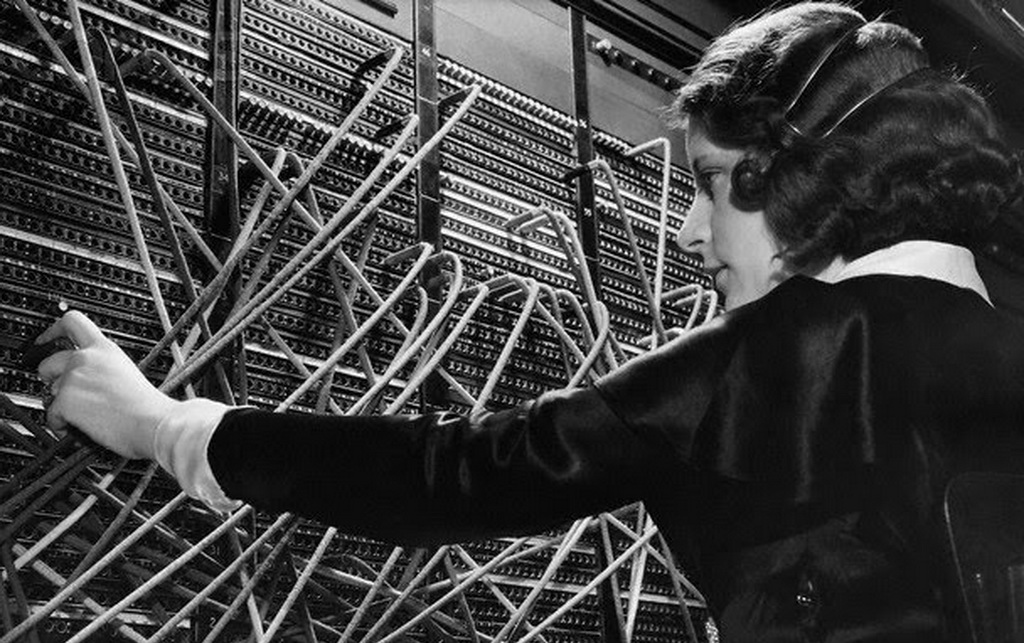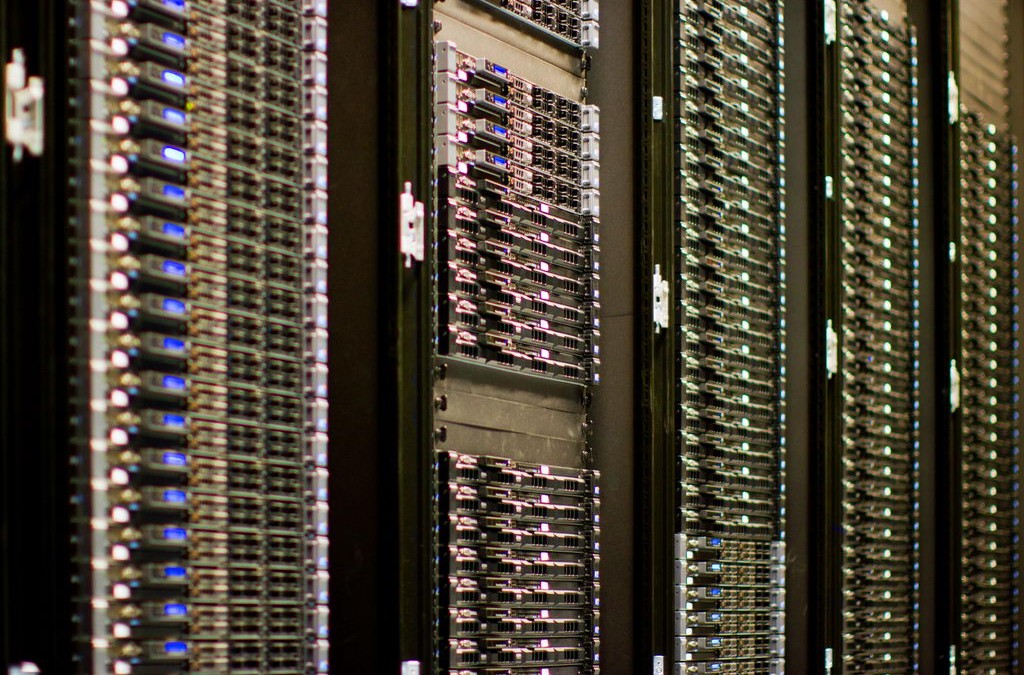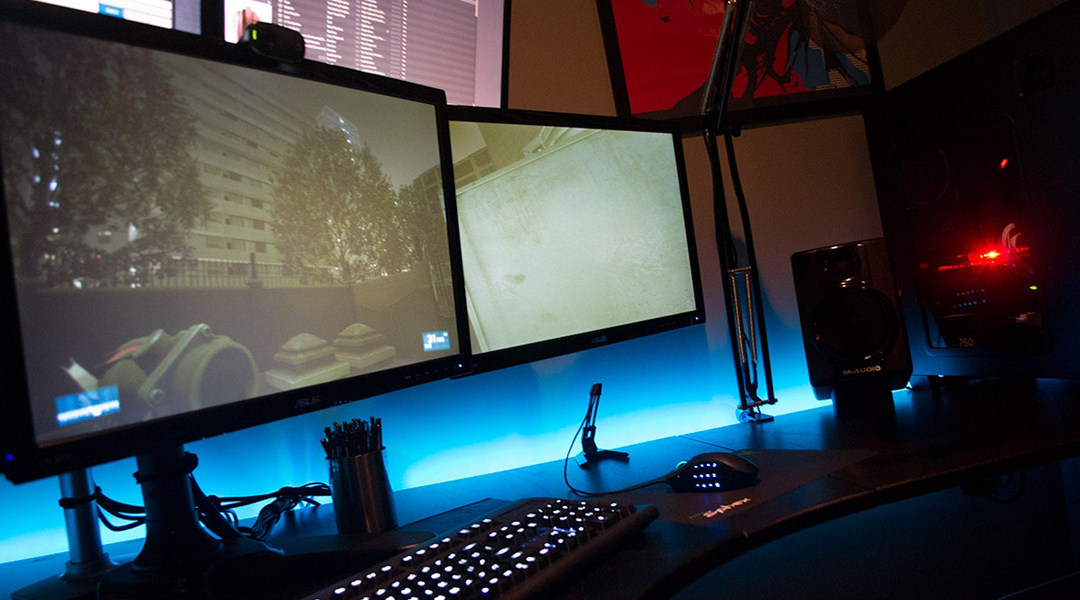
by CDO Technolgy | Nov 21, 2014 | CDO Technology News, Input Devices, Maintenance
One of the most common computer peripheral that requires thorough cleaning is the keyboard. Keyboards tend to require cleaning quite often due to the propensity of people to eat and drink while they type a document, play a game, or watch a movie. Regular collection of dust is compounded by the accumulation of crumbs and small fragments of all kinds of snacks. In most cases, spilling a drink on a keyboard is more disastrous than crumbs. Because keyboards have many crevices and the key-bed itself is difficult to reach, it is tough to properly clean.
The first step is to determine the best tools needed for cleaning a keyboard. This is vital to avoid physical damage to the keys and the board itself. Isopropyl alcohol is a good cleaning solution to use. Alcohol is typically good for disinfecting and cleaning many things, but more powerful kinds of alcohol should be avoided because they can remove the letter markings on the keys. Therefore, it is important to be sure Isopropyl alcohol is used. There are some electronic cleaning solutions that can also be used. These are typically found in electronics or office supply stores. Another good important item is canned air. A small, hand-held vacuum cleaner can be helpful but not necessary. It is noteworthy to emphasize a small vacuum because small hand held kinds usually have a more gentle suction. It is inadvisable to use a regular vacuum cleaner attachment. The final items needed are Q-tips, a lint-free cloth, and a thin knife or screwdriver. The lint free cloth can be any kind rag or wipe that does not shed lint. Paper towel can be used, but it is not ideal. A final item which can be helpful is a small brush with soft bristles like a small paintbrush.
The first step to cleaning a keyboard is focused on the keys themselves. Always be sure to unplug the keyboard first if it is wired. Holding the keyboard upright on its side, use canned air to blow the entire surface and between the keys to clear loose lint and crumbs. Be sure to keep the can of air upright at all times. Next take the lint-free rag or cloth and dampen it with the alcohol or cleaning solution. Avoid soaking the cloth and never pour or spray the cleaner onto the keyboard. Firmly but gently wipe off the surface of the keys. To clean the sides of the keys, use a Q-tip or the small brush dipped in alcohol and run it around each key. The brush can also be used in dusting of the keys.
The most difficult step in the cleaning process is key removal. Prior to key removal, take a picture of the keyboard or draw a layout of the keyboard. This is important for putting keys back on correctly. To remove the keys from a regular desktop keyboard, insert the thin knife or screwdriver under the corner of a key and very gently pop it up. This must be done with great care because the keys could break if too much force is used. If a key does not pop off willingly then reposition the tool, but do not force the key off. It is recommended not to do this when cleaning a laptop keyboard. The plastic clips attaching laptop keys to the board can break very easily, and it is difficult to reattach the keys. It is recommended to remove only letter and number keys and the F1 through F12 keys; larger keys like the SPACE bar and SHIFT keys are difficult to reattach. If the removed keys are still dirty, they can be washed separately with dish soap and must be air dried.
Once the keys are removed it is time to clean the key-bed. Use the canned air or the small vacuum to clear out the key bed of remaining debris and crumbs. Again use the lint-free cloth and alcohol to wipe out the key bed. Make sure the cloth is damp not soaked and dripping. The key bed can be wiped as much as is needed to remove what the vacuum and canned air failed to remove. Afterward, it is acceptable to dry it a bit with a dry cloth, but it should be allowed to fully air dry. Do not reattach the keys until both the keys and the key-bed are completely dry. Reattaching the keys is fairly easy as long as the sketch or picture of the keyboard layout is referred to. To reattach the keys place them on the correct contact point and press them firmly. They should snap on easily.
Although it may appear complicated, cleaning a keyboard is not as difficult as it seems. Of course, all cleaning should be done with care and regularly no matter how easy. Doing a full cleaning of a keyboard periodically is important. Preventing build up of debris keeps the typing and/or gaming experience fast and enjoyable.

by CDO Technolgy | Oct 24, 2014 | CDO Technology News, Input Devices
What is a KVM Switch?
One of the most useful technological devices for home and business situations is the KVM switch. The name is technically “keyboard, video, and mouse switch.” KVM switches save time by allowing one to view multiple computers on one monitor by switching among them, instead of having to walk to a different monitor every time something needs to be done on another computer. KVM switches are typically used in businesses because some KVM switches can handle up to thirty-two computers. This makes KVM switches very helpful in cases of multiple servers, especially when several servers are on the same rack. Although all KVM switches do virtually the same thing, there are some differences.
 The most important difference that must be taken into account is the type of video signal to be used. KVM switches are primarily made with either DVI input and output or VGA input and output. Although VGA is the older, analog video signal; it is still the most commonly used. The video outputs of the single monitor and the computers or servers help determine what kind of KVM to use. If the monitor has only one video input (frequently VGA), then all the computers must have the same video output. KVM switches will not convert video signals. When the monitor has both DVI and VGA input, the video outputs on the computers will determine which KVM is best for the situation.
The most important difference that must be taken into account is the type of video signal to be used. KVM switches are primarily made with either DVI input and output or VGA input and output. Although VGA is the older, analog video signal; it is still the most commonly used. The video outputs of the single monitor and the computers or servers help determine what kind of KVM to use. If the monitor has only one video input (frequently VGA), then all the computers must have the same video output. KVM switches will not convert video signals. When the monitor has both DVI and VGA input, the video outputs on the computers will determine which KVM is best for the situation.
Another factor to look at on KVM switches are the connections needed for peripherals. The majority of older and still many current KVM switches use the PS/2 connections for the mouse and keyboard for each computer. Many newer KVM switches use USB ports instead of the PS/2 connections. This is primarily because the majority of newer computers support fully bootable USB devices, and most peripherals are USB.
KVM switches are also often connected with special cabling kits that usually bind the video and PS/2 or USB cables together. In some cases cat5 cables are used to connect computers to the KVM in conjunction with other cables depending on the specific KVM switch. Some KVM switches now include audio input and output jacks stepping up the experience to include audio with video. Usually at least some cables are included with a KVM switch when it is purchased. The cables usually included are those for peripheral devices and/or audio.
KVM switches are valuable tools. KVM switches are ideal for saving time and energy when large arrays of computers or servers are involved. They also provide a variety of connections to fit almost every situation. Using a KVM switch is one of the best ways to conserve resources and to get the job done just a bit easier.

by CDO Technolgy | Sep 8, 2014 | CDO Technology News, CPU, Intel
The one constant in the world of technology and computers is change. No matter how innovative a product is, there always comes a time for updates. So naturally, when Intel initially announced its plans to update its i7 and Xeon CPUs, the news was met with interest. Now that both CPUs are finally out, the market finally gets to give a verdict.
What specifically has changed? Is the buzz around the new CPUs a bunch of hype and nothing more?
If you want to know more about Intel’s latest iteration of its i7 and Xeon line, then you’ve come to the right place.
The Basics
i7
As has been touched upon, the big pull for Intel’s i7 is its long and storied reputation as an unbelievably fast consumer model. Heralded for its developments in memory access and the ease with which it accommodates graphics cards, the i7 has been enthralling enthusiasts and professionals for years.
Xeon
The Xeon is a larger core that’s designed with IT professionals and businesses in mind. Noted for its high-end performance, steady innovation, and unique designs, this workstation CPU has addressed many a company’s tech-related concerns.
Notable Changes
Xeon
Released in connection with Haswell-EP rather than Ivy Bridge, the latest Xeon CPUs are actually a family of three chips with 8, 12, and 18 cores respectively. The new releases transmit more information, greater efficiency via its volt management, and overall speed compared to its predecessors.
i7
Also released via Haswell-EP, the newest version of the i7 is actually Intel’s first 8-core offering to the consumer market for those who opt for the higher-end version. Additional changes include the use of a new chipset, a whole new CPU socket, and DDR4 memory.
For Better or For Worse?
Of course, history is riddled with new releases that turned out to be substantially worse than their predecessors. Do the Xeon and i7 fall under this category? Here’s a closer look at some of the biggest key changes.
DDR4 Memory
In the i7, the DDR4 replaced the DDR3 of the previous editions. For pc users, DDR3 memory currently takes up massive amounts of space and power on a PC. DDR4 is a recent development but it’s already proven itself as a more efficient way to handle memory.
8-Core and 18-Core
Although the addition of extra cores increases power, that power comes at a price. In this case, the cost is a reduced turbo frequency. While the i7 and the Xeon are still lightning fast even with the extra cores, reviewers have noticed a sight trade-off.
LGA 2011
The ability to upgrade is a crucial factor in determining the shelf life of technology. Intel’s decision to make both the i7 and the Xeon compatible with LGA 2011 (aka Socket R) bodes well for those who may wish to combine CPUs in the future.
These days, companies and consumers want more flexibility, more power, and better performance from their computers. Through the recent release of the I7 and Xeon CPUs, Intel has shown that it’s up to the challenge. With the integration of new technology and a new socket, the company is also clearly planning for the future.

by CDO Technolgy | Aug 30, 2014 | Business Servers, CDO Technology News, Managed IT Services
What are Servers?
Servers have been around as long as networks. The generic use of a server is to ‘serve’ something to other computers. This communication is done with a variety of different server types with their own specific uses. They act as facilitators, storage, and so on. Not all server types are exclusive; many types can be simultaneously in use on the same server machine. Some servers can even be client computers (those on which people access the data being served) at the same time.
Some common types of servers are most recognizable. These are: FTP, proxy, game, and web servers. These machines are usually somewhat similar to the personal computers found in most homes and businesses, although they usually have specific software and hardware to provide a smoother transition of the data. Servers usually have more storage space, faster processors, and more RAM (random access memory) in order to make them more efficient. Rather than a standard operating system used by the general public (such as Windows 7), servers usually have a server platform. An example of this for a PC would be Microsoft Server.
FTP servers are used to provide access to files, either publicly or after using a login, depending on whether the files are free or for a fee. This functionality is usually included on web servers, as well, to allow easy access to web site owners to upload and download their own files.
Proxy servers are an extra step between the end user (also known as the client computer) and another server (usually a web server) that handles filtering, sharing connections, and helps to improve performance. These are sometimes used by employers to limit employees’ access to certain web sites from the workplace.
Game servers are those used by online games to provide the interface and processing for them. These are most notable when the game is an MMO (massive multiplayer online) game, in which many people around the world are connecting at the same time, to play the same game. There is often interaction between the players, which necessitates a server that is powerful enough to keep up without causing lag (pauses in the gameplay, during which the game continues, but the player misses the action because the server ‘catches them up’ by skipping).
Web servers are by far the most common ones. These are the servers that house the web pages (such as the one you are currently reading). These communicate with the client’s browser and send the information – text, images, videos, etc. – that is requested. Pretty much anything that is accessed through a browser (such as Internet Explorer, Firefox, Chrome, etc.) is processed by a web server.
Others include application servers, which handle linking databases with web servers; list servers, which handle mailing lists for newsletters and other bulk email processes; chat and IRC (internet relay chat) servers, which allow real-time communication between people wherever they are; mail servers which handle basic email; and news servers which carry newsgroups such as the USENET service, although these are not as popular among the general public as they once were.

by CDO Technolgy | Aug 12, 2014 | CDO Technology News, Maintenance, Monitors
Safely and Efficiently Cleaning LCD’s.
As the old CRT (cathode ray tube) monitors continue to rapidly exit the scene of everyday life, they are replaced by the sharp, high resolution LCD (liquid crystal display) monitors. Like all screens, LCD’s collect significant amounts of dust and smudges. The question that many encounter is, “How can I clean my LCD safely?”. It is important to clean an LCD monitor correctly to get the best experience from it.
The first step is to examine what not to use to clean an LCD. First, standard cleaning products that contain chemicals like ammonia or alcohol should be avoided. A common product people have used is Windex. These kinds of chemicals can damage an LCD by causing the coating on the LCD to degrade or come completely off. Regular tap water is also not advisable due to the chemicals and minerals it contains. It is also important to avoid spraying any product directly onto an LCD. LCD monitors are not water tight, and any liquid could seep in and damage the internal components of the monitor.
A second issue to address is what kind of cloth not to use when wiping the screen. Regular cleaning rags can be abrasive and have small bits of material that can scratch the screen. Any kind of paper products, like paper towel should not be used on an LCD due to their rough constitution. Although they may appear or feel soft, paper products can still damage the LCD’s surface.
What is the correct way? As far as cleaning solutions go, many office supply and computer stores sell special solutions specifically designed for LCD’s. Another common option is to make your own solution which normally consists of 50% distilled water and 50% vinegar. Distilled water can also be used by itself because it has been purged of minerals and chemicals. The best cloth to use is a microfiber cloth. Microfiber cloths are often sold with LCD monitors or with screen cleaner solutions. Another option is special, anti-static wipes designed particularly for cleaning an LCD, although these are less commonly sold.
Once the necessary items are assembled, the cleaning of the LCD can begin.
- First, turn off the LCD monitor. It is also recommended that the monitor be unplugged to reduce risk of electric shock.
- Second, it is suggested, though not necessary, to use some canned air to blow any loose dust of the surface of the LCD.
- Next, apply the cleaning solution to your microfiber cloth. Only get the cloth damp not soaked. Using a spray bottle to apply it can help accomplish this.
- Finally, gently wipe the LCD. To get the best results, wipe horizontally across the screen, while being sure to only press very gently. Allow the LCD to air dry afterward.
Following these guidelines can ensure you get the best visual experience from your LCD monitor. Cleaning your monitor properly and regularly can also improve its life span and overall performance.






